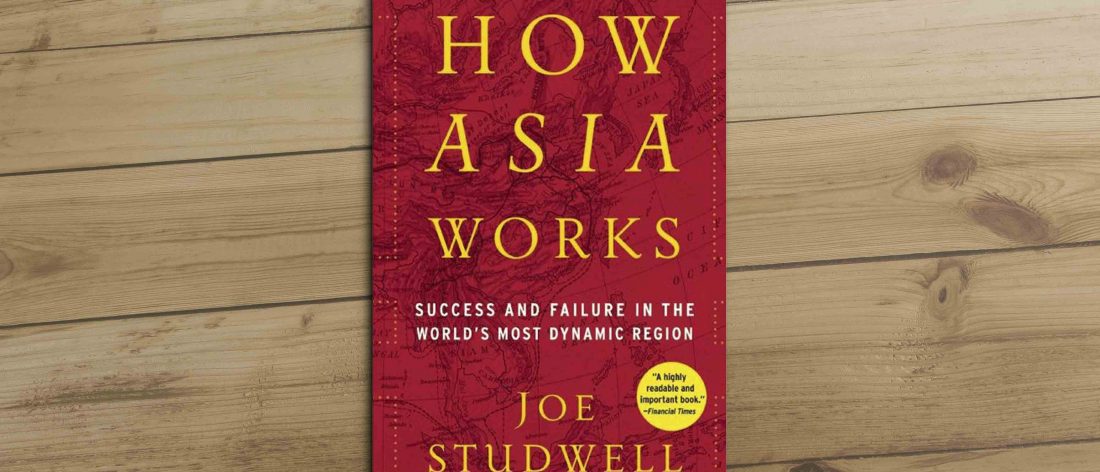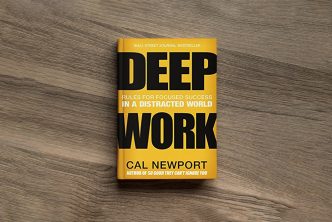BOOK REVIEW: “How Asia Works: Success and Failure In the World’s Most Dynamic Region by Joe Studwell. Grove Press New York” (March 2013) Length: 711 pages.
To initiate economic progress in developing countries, governments should support household farming, build a competitive manufacturing industry and exploit the financial sector’s power to help the economy as a whole.
By Emeka Chinonso Okafor
The Economist said of the book “How Asia Works”: “Provocative. How Asia Works is a striking and enlightening book. A lively mix of scholarship, reporting, and polemic.” The word enlightenment describes Joe Studwell’s book for me as I read it while I was in Asia seeking insights around the Asia economic miracle.
In this brilliant book, Joe Studwell outlays how certain southeast Asian countries were successful at development, how others tried but didn’t quite get there and how others woefully failed at development. While explaining the growth trajectory, he used successful cases in Taiwan, South Korea, Japan, and China, subpar cases from Malaysia, and unfortunate cases in Thailand and the Philippines to buttress his point. The author zeroed his development analysis on three driving factors agriculture, manufacturing, and finances.
In Agriculture, Studwell argues that this sector provides developing countries with the opportunity to utilize its most abundant resources: human labour. While most countries know the importance of agriculture and they have made efforts to support the sector, Joe Studwell argues that they have been doing it wrong. For the successful cases in the book, Studwell emphasised what he calls garden farming, centered around small-scale household farming as against huge farms. While this is counterintuitive, the author showed that these small-scale farms produce more per acre than large farms and employed more people. The author argues that unlike the manufacturing sector, where scale is necessary, that’s not agriculture’s case. For agriculture, only fertilizer and intensive can improve yields and quality. Joe Studwell emphasized the need for these farmers to own their land, and this gave them the incentives to work the land for their profit without paying any landlord fees for renting the land. A lot of the successful countries carried out unpopular (among landowners) land reforms and redistributed land, ensuring, for instance, in Japan that every family had at least three and a half hectares of land to farm that they couldn’t sell to anyone. In addition to this, the government provided aggressive agriculture extension in successful cases. Farmers were taught best farm practises and were encouraged to grow high yielding, high demand, and profitable products.
The results of these policies were astounding as the number of farmers who owned their farmland in 1945 rose from 30 percent to 64 percent by 1960. The author showed that this action reduced inequality in such societies as seen in the Gini coefficient– the standard measure of inequality, where 0 represents perfect equality and one perfect inequality – improved from 0.56 at the beginning of the 1950s to 0.33 by the mid-1960s. The gross output of foodstuffs in Japan increased by half while Taiwan experienced three-quarter growth in yield.
In terms of manufacturing, Studwell reasons that once the foundation of a robust agricultural sector was established, the next logical step for the economy will be manufacturing. He postulates that manufacturing is more important than the service sector as manufacturing doesn’t require a highly educated workforce as it relies heavily on machines that don’t require complex training to operate. It is also easy to trade manufactured goods in the global more prosperous market than to sell services. However, the author comes with another counterintuitive idea: the protection of infant industries, in contrast to developed countries that emphasize free-market principles for development. The author counters this position by showing how countries such as the United Kingdom, United States, and even Germany used protectionist policies. The book states that protectionism was done to shelter infant domestic manufacturing from outsider competition as these companies imitate and improve on foreign technologies to the point they can be competitive. However, the protectionism was only for external competition, not for internal ones, as failing companies were culled, and successful ones were encouraged. Credit and incentives were contingent on exportation and domestic manufacture of components. The idea of emphasizing export was that the external competition would force these manufacturers to improve their goods’ quality. Once these local manufacturers start succeeding, the government begins withdrawing these incentives and allowing more free-market activities in those industries.
On finances, Studwell shows that rapidly developing kept their financial institutions close to the chest while paying lip service to free- market principles. This was done to ensure that global financial crises don’t drastically affect their young economy. The author argues that if financial deregulation is hastily done, it can undermine these developing countries’ technological competitiveness. The author cites Malaysia’s case in 1989, where the stock exchange was deregulated, and crucial development money started flowing into the exchange as banks were quick to lend money to speculators, leaving little for financing the real sectors like manufacturing. This situation worsened the Malaysia manufacturing industry’s competitiveness, and they fell behind other Southeast Asian countries. In the successful cases, Banks were given incentives to invest according to the government’s interests as central banks gave discounted loans to banks for export oriented and manufacturing enterprises. This idea has also been developed by Japanese economy expert Professor Richard Werner who created the word “quantitative easing.” In his work “The Japanese miracle,” Richard pointed to what he called “credit guidance” as a way the Japanese Central bank covertly provided finance to industries that were in line with the government’s industrialization policy.
In conclusion, in his book, Joe Studwell distilled over 30 years of a region’s massive development and economic boom and bust into 711 pages. It is a book on “How,” and while every case isn’t the same and the times might be different, it is a lesson in discipline, tact, and conscientiousness regarding economic development. While the book’s three central ideas seem controversial and counterintuitive, the question is, can it be executed in developing countries like Nigeria?







